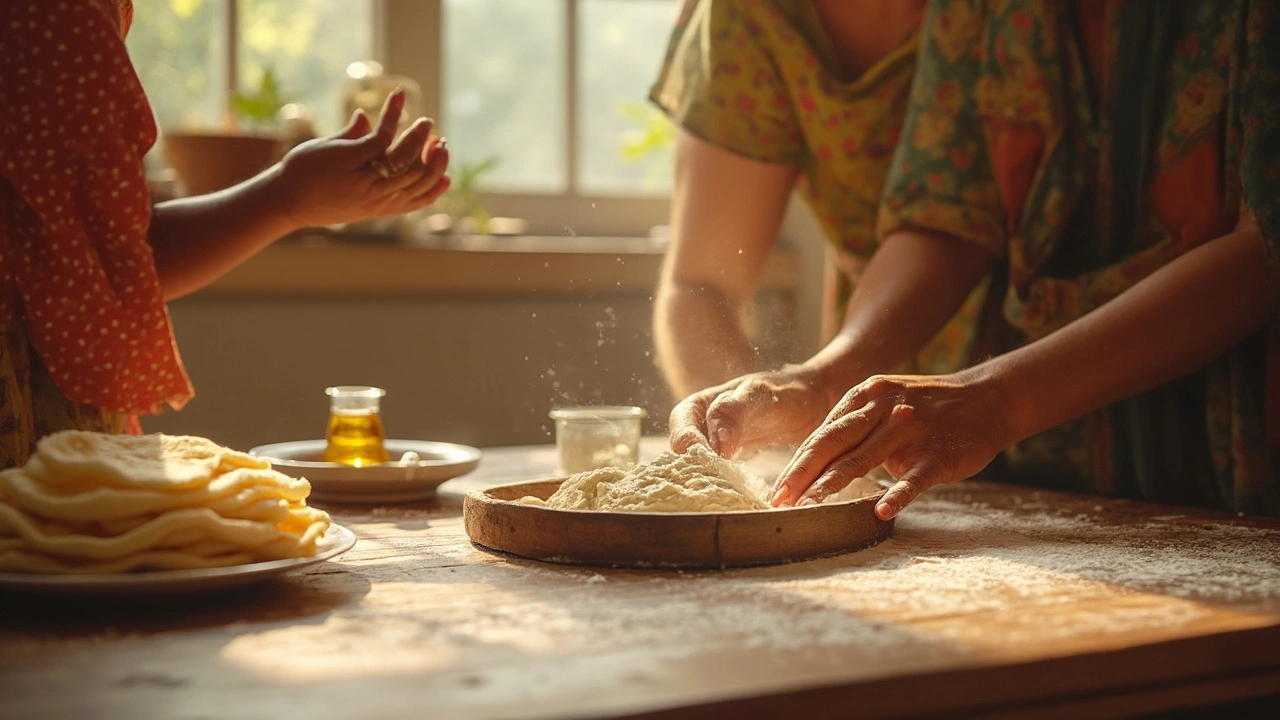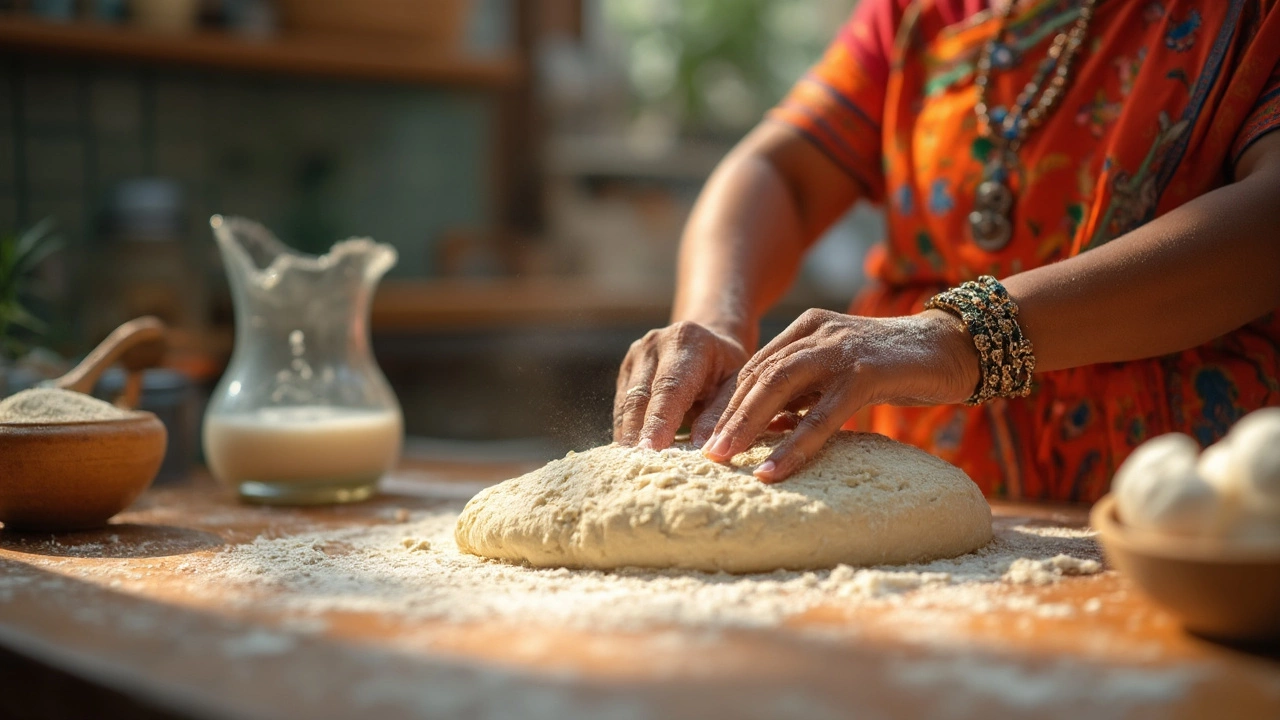Soft Roti Tips – Master Fluffy, Tender Indian Flatbreads
When working with Soft Roti, a pliable Indian flatbread made from whole‑wheat flour, water, and a pinch of salt, cooked on a hot tawa or griddle. Also known as soft chapati, it delivers a delicate bite that pairs perfectly with curries, dals, or pickles. Soft roti tips focus on the right dough, gentle handling, and quick, even heat – three pillars that turn a tough chapati into a cloud‑like wrap.
The foundation starts with Atta (whole‑wheat flour), the traditional milled wheat used across northern India, offering a slightly gritty texture and high gluten content. Using fresh, fine‑grained atta ensures the dough can stretch without tearing. Pair it with a dash of Baking Powder, a leavening agent that creates tiny air pockets during cooking, making the roti softer and more forgiving. While not required, a pinch (about ¼ tsp per kilogram of flour) can rescue a dough that feels too dense. Next, the kneading step matters: a smooth, elastic ball needs 5‑7 minutes of steady hand work, or a short rest of 15 minutes to let gluten relax. Proper kneading is a major factor in achieving a roti that puffs up instead of staying flat.
Common Pitfalls and Quick Fixes
Many home cooks wonder why their roti isn’t puffing. The main culprits are a cold tawa, over‑rolled discs, or a dough that’s too stiff. Heat the tawa to a steady medium‑high; a few drops of water should sizzle instantly. When rolling, aim for a uniform 6‑mm thickness – too thin leads to tearing, too thick blocks steam. If the dough feels dry, sprinkle a few drops of water during rolling. Another frequent issue is the absence of steam: after placing the roti on the tawa, cover it with a lid for 10‑12 seconds. That brief steam burst helps the surface separate and rise, giving you that coveted puff.
A related entity is Kneading Technique, the method of working dough to develop gluten, influencing softness and elasticity. A wrong technique—like pressing too hard or using a jerky motion—can over‑develop gluten, resulting in a tough bite. Gentle, rhythmic folds followed by short rests strike the right balance. Likewise, the cooking tool matters: a cast‑iron tawa retains heat longer, providing consistent temperature, whereas a thin non‑stick pan can create hot spots that burn the roti before it puffs.
Storage also plays a role in maintaining softness. Once cooked, wrap roti in a clean kitchen towel and place them in a insulated container. The residual steam keeps them supple for up to an hour. If you need to keep them longer, a quick reheating on a hot tawa for 20‑30 seconds revives the texture without drying them out.
By paying attention to flour quality, optional leavening, proper kneading, and heat management, you can consistently produce soft, fluffy roti that rivals any restaurant. Below you’ll find a curated set of articles that dive deeper into each of these aspects, from troubleshooting flat chapatis to mastering the perfect puff. Explore the tips, experiments, and expert advice that will elevate your everyday Indian meals.

Baking Soda in Roti: Should You Use It or Not?
Curious if you should add baking soda to roti? Get the facts, expert cooking tips, and see how a pinch of soda can change texture, taste, and tradition.

Best Time to Add Oil in Roti Dough: Tips for Fluffy Rotis Every Time
Want softer, tastier rotis? Discover exactly when and why to add oil to your dough. Get flavorful and fluffy results with these tried-and-tested tips.

Why Does Roti Get Hard After Cooking? Simple Fixes That Work
Roti can go from soft to tough pretty quickly, and it's not just luck—technique matters. This article digs into why rotis often turn hard after cooking and how to keep them soft every time. From dough texture and resting times to rolling skills and cooking tricks, you'll find clear reasons and down-to-earth solutions. Common myths will get debunked with actual practical advice. If you want your rotis to be soft and fluffy, this is a must-read.